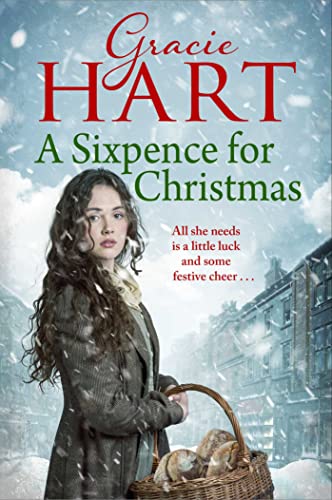A Sixpence for Christmas
Leeds 1895. Out of work and with a dying mother and a rebellious younger sister to care for, Meg Fairfax is struggling to cope. The one bright spot is her fiancé, Frankie Pearson, who owns an upmarket patisserie. His offer of work provides Meg with much-needed financial support, but Meg feels out of place amongst his well-to-do clientele. What she would really like is to have her own bakery, catering to working-class people like herself, but that dream seems hopelessly out of reach, especially as Frankie has financial worries of his own…
A Sixpence for Christmas is the second in what is clearly intended to be at least a trilogy of sagas, but it stands on its own pretty well, with only necessary hints about back-story which don’t bog down the current book. Unfortunately, the novel gets off to a slow start, with characters spending the first third of the book endlessly having circular conversations, mostly about Meg’s doubts about whether she should marry above her class and her sister Sarah’s determined dislike of Frankie, which is hammered home so relentlessly that at times I wondered whether Hart’s hero was actually meant to be her villain. The repetitiveness of the conversations might reflect the way people talk in real life, but it makes for dull reading and doesn’t progress the plot.
When the plot does finally kick in, the book improves, but there are a few odd slips: Sarah’s childhood friend Harry is twice referred to as Larry, and a minor character, Mrs Hopkirk, is similarly occasionally rechristened Mrs Randall (presumably in honour of the old supernatural detective series).
The door is left open for a sequel, which fans will be pleased about, but I wouldn’t necessarily recommend this novel to anyone who is not a saga fan.










